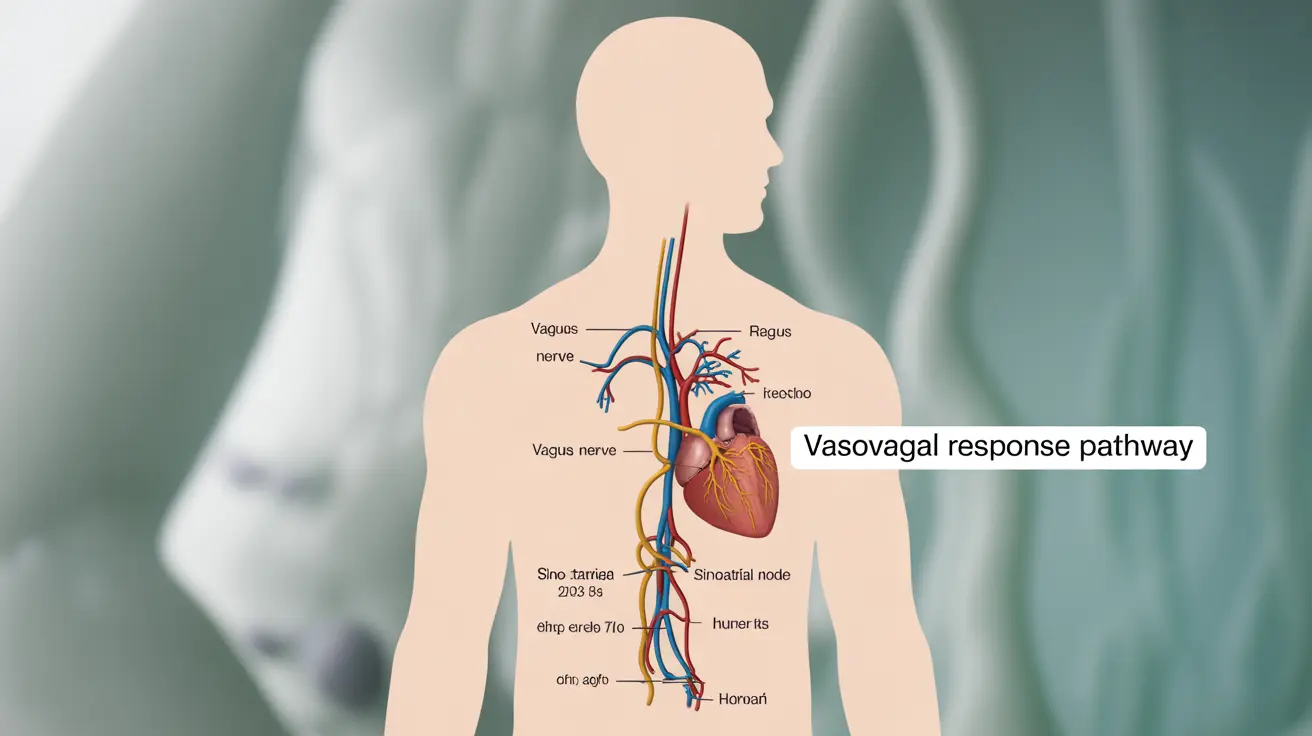Have you ever felt lightheaded or actually fainted when confronted with something frightening? Fainting from fear is a real physiological response known medically as vasovagal syncope, and it affects many people worldwide. This natural but concerning reaction occurs when your body overreacts to certain triggers, including intense fear or emotional stress.
Understanding why this happens and how to manage it can help you feel more in control and prevent future episodes. Let's explore the science behind fainting from fear and learn practical strategies to handle these situations.
The Science Behind Fear-Related Fainting
When you experience intense fear, your body activates the vasovagal response, which involves a sudden drop in heart rate and blood pressure. This reaction occurs when the vagus nerve, connecting your brain to various organs, receives intense stimulation. As a result, less blood flows to your brain, potentially leading to temporary loss of consciousness.
This response can be triggered by various fear-inducing situations, such as:
- Seeing blood or needles
- Experiencing intense emotional stress
- Witnessing traumatic events
- Standing for long periods in stressful situations
- Receiving unexpected bad news
Warning Signs and Symptoms
Before fainting from fear, your body typically sends several warning signals. Recognizing these early signs can help you take preventive action:
- Lightheadedness or dizziness
- Cold, clammy skin
- Tunnel vision or blurred eyesight
- Nausea or stomach discomfort
- Rapid heartbeat followed by slowing
- Pale complexion
- Feeling warm or sweating
Prevention and Management Strategies
There are several effective ways to prevent or manage fainting episodes triggered by fear:
Physical Techniques
These immediate actions can help prevent a fainting episode:
- Lie down or sit with your head between your knees
- Contract your leg muscles while standing
- Practice controlled breathing exercises
- Stay hydrated and maintain blood sugar levels
- Avoid sudden movements or standing up quickly
Long-term Management
To reduce the likelihood of future episodes, consider these approaches:
- Regular exercise to improve circulation
- Stress management techniques
- Gradual exposure therapy (under professional guidance)
- Maintaining proper nutrition and hydration
- Getting adequate sleep
When to Seek Medical Help
While fainting from fear is often harmless, certain circumstances warrant medical attention:
- Frequent fainting episodes
- Fainting without warning signs
- Injury during a fainting episode
- Family history of sudden cardiac events
- Fainting during physical activity
- Prolonged loss of consciousness
Frequently Asked Questions
What causes fainting from fear and how does vasovagal syncope trigger this reaction? The fainting response occurs when fear triggers the vasovagal nerve, causing a sudden drop in blood pressure and heart rate. This reduces blood flow to the brain, leading to temporary loss of consciousness.
What symptoms should I watch for before fainting due to fear or emotional triggers? Key warning signs include dizziness, cold sweats, tunnel vision, nausea, pale skin, and feeling warm. You might also experience a rapid heartbeat followed by a slower heart rate.
How can I prevent or manage fainting episodes caused by fear or stress? Prevention strategies include lying down when feeling symptoms, tensing leg muscles, staying hydrated, practicing controlled breathing, and implementing stress management techniques. Regular exercise and proper nutrition also help.
When should I see a doctor if I faint from fear or emotional distress? Seek medical attention if you experience frequent fainting episodes, faint without warning, suffer injuries while fainting, have a family history of cardiac issues, or lose consciousness for extended periods.
What treatment options are available for frequent fainting due to vasovagal syncope triggered by fear? Treatment options may include lifestyle modifications, physical counterpressure maneuvers, medication in some cases, and cognitive behavioral therapy to address underlying fear triggers. Your healthcare provider can create a personalized treatment plan based on your specific situation.




